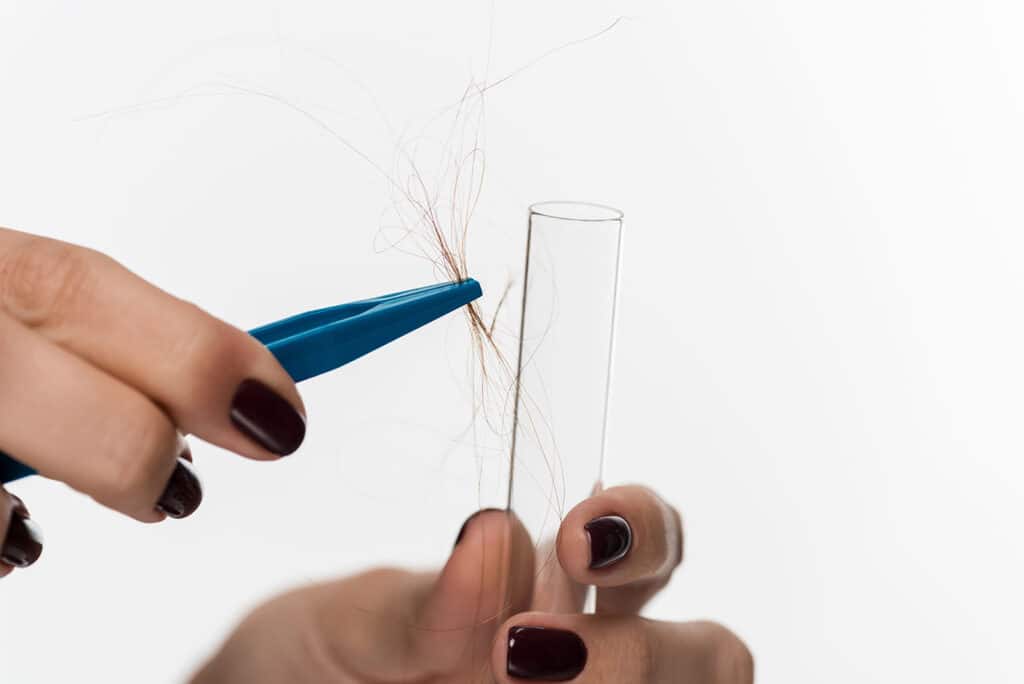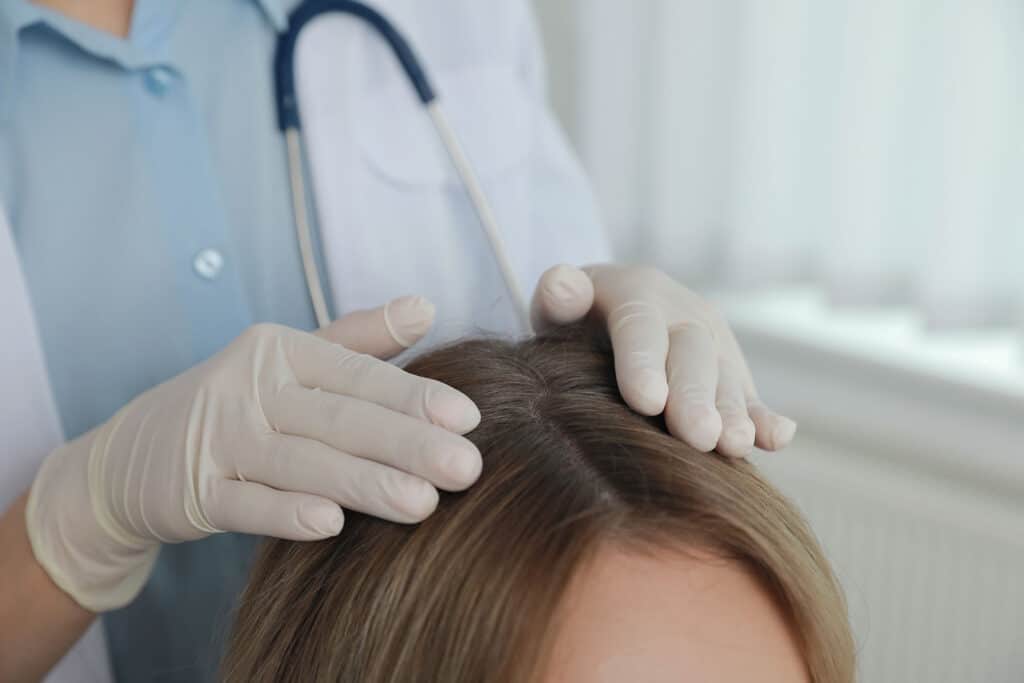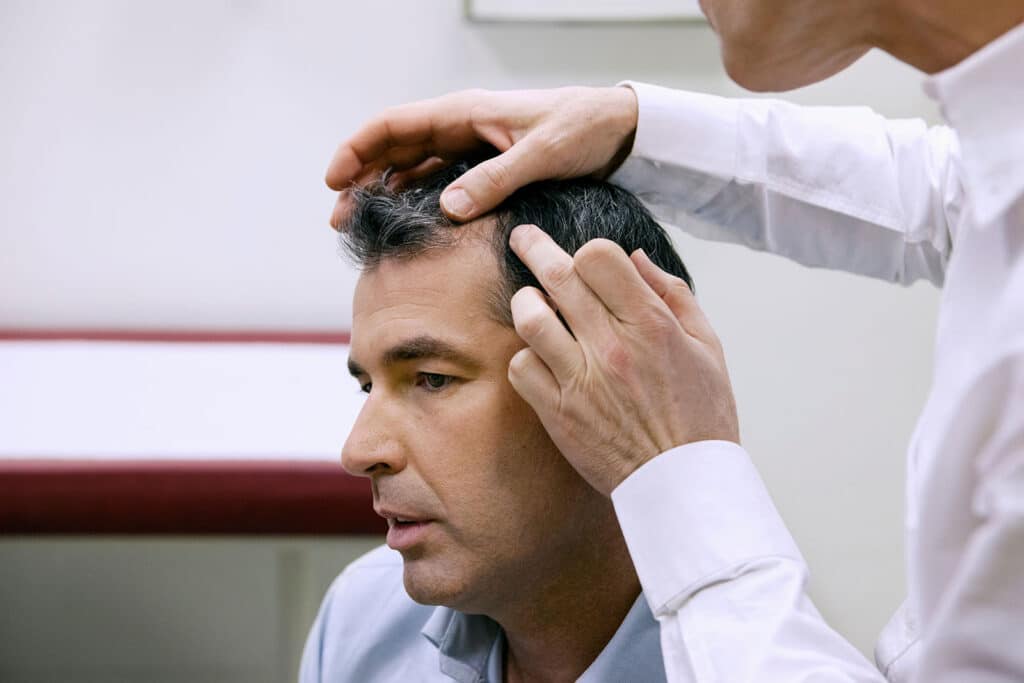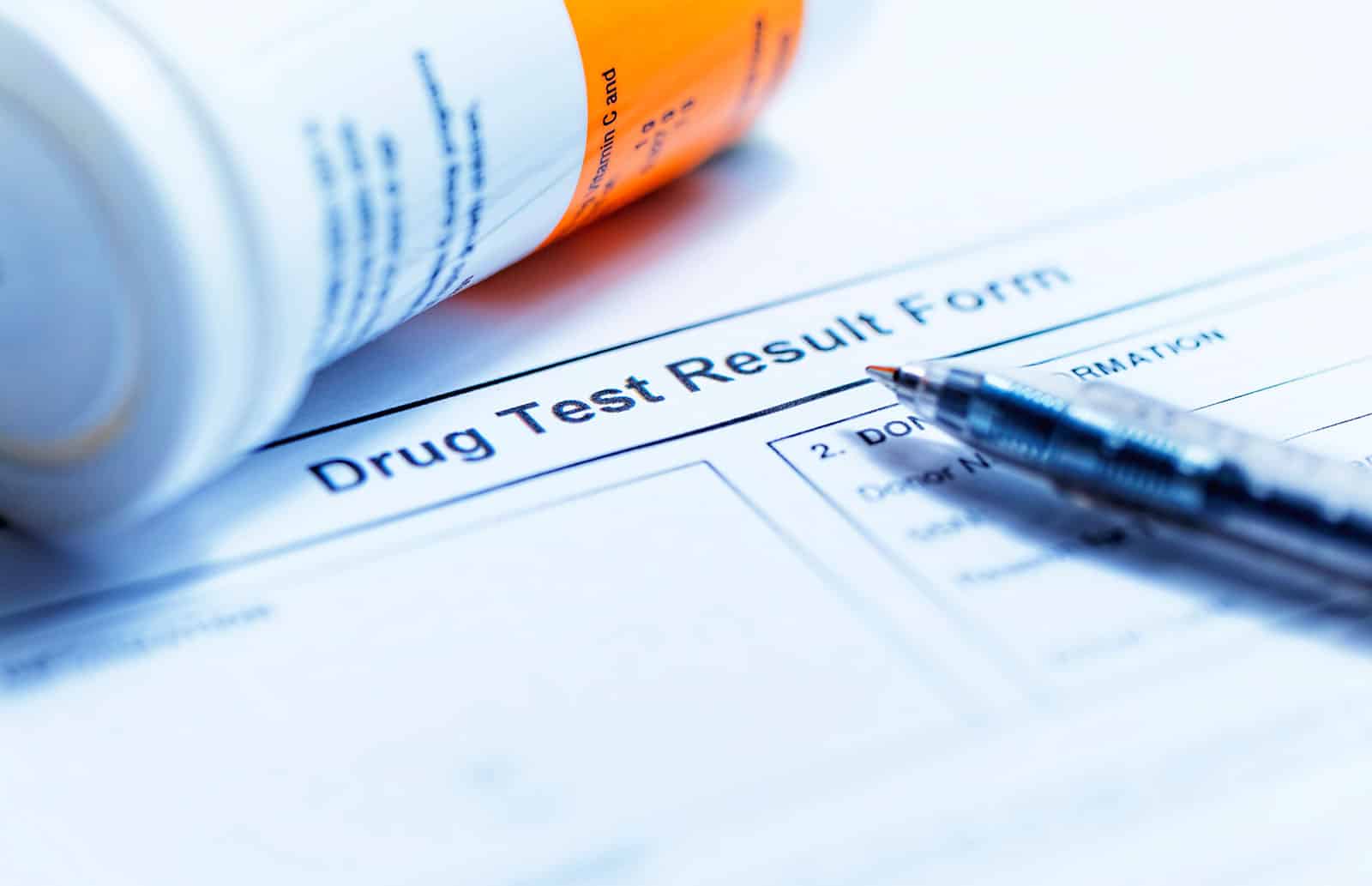Detecting alcohol consumption in individuals has expanded beyond the usual blood and urine tests. Hair alcohol testing is now an important method to determine the frequency and patterns of how individuals consume alcohol. Alcohol metabolites are distributed into hair follicles via blood vessels and sweat, creating a detection window that can last for months. This article delves deeper into how hair alcohol testing works and its applications.

Table of Contents
Understanding Hair Alcohol Testing
Like urine or blood tests, hair alcohol tests provide another method to detect the presence of alcohol in an individual’s system. Hair testing for alcohol performed in three stages:
- Collecting hair samples: Hair samples are usually taken from a person’s scalp. Around 200 hair strands are needed to give an accurate test.
- Processing the hair sample: Experts put the hair sample through a series of processes to extract any alcohol metabolites inside the hair shaft.
- Analyzing the results: The results are then analyzed using specific laboratory techniques to determine if there is alcohol in the individual’s system.
Hair alcohol testing looks for two specific metabolites. One is Ethyl Glucuronide (EtG), which is a metabolite of ethanol, and the other is Fatty Acid Ethyl Esters (FAEE), which accumulates in the hair shafts when individuals consume alcohol.
The Advantages of Hair Alcohol Testing
Hair drug testing has a few advantages over blood or urine testing. These include:
- Longer Detection Window: The detection window can span several months, unlike urine or blood tests which have shorter windows.
- More Convenient: Collecting a hair sample from a person’s scalp is more convenient than asking for a urine or blood sample.
- Accurate: Hair alcohol testing has proven to be very accurate. It is also harder to manipulate compared to tests such as urine or blood tests.
How Alcohol Enters Your Hair
When you consume alcohol, the body metabolizes and slowly absorbs it. The enzyme responsible for metabolizing alcohol is known as alcohol dehydrogenase (ADH). ADH converts the alcohol in your system into acetaldehyde, and acetaldehyde is further broken down into acetate. This two-stage process takes place in the liver.

Once the body has metabolized the alcohol, the by-products, in the form of alcohol metabolites, enter the bloodstream. Alcohol metabolites then get distributed to your organs, tissues, and hair follicles.
Hair follicles are surrounded by small blood vessels. These vessels are tasked with removing waste products and supplying oxygen and nutrients. Alcohol metabolites enter these small blood vessels and are incorporated into the body’s hair follicles.
Timeline of Alcohol Appearance
The timeline of how fast alcohol will appear in your hair depends on factors such as how fast your hair grows, the length of the hair sample collected, your body’s metabolism rate, and how much alcohol was consumed.
However, the amount of time it takes alcohol metabolites to make their way to your hair is roughly 7-10 days after consuming alcohol. Once there, the alcohol metabolites can be detected even months later.
The Lifespan of Alcohol in Hair
When you consume alcohol, most of the metabolism of the alcohol takes place in the liver. The by-products, including EtG and FAEE, are formed during this metabolic process.
Once the body circulates these alcohol metabolites to your hair, they bind to the proteins in your hair shaft. As your hair grows, the metabolites become trapped in your hair shaft. EtG accumulates in the hair, mainly from sweat, while FAEE accumulates in the hair, mainly via blood circulation. The concentration of metabolites gives experts a good idea of the amount of alcohol you consume over a certain period.
Since hair grows at a rate of roughly one centimeter per month, experts look at the hair closest to the scalp when searching for metabolites. Metabolites close to the scalp indicate recent alcohol consumption, and metabolites further from the scalp indicate later alcohol consumption.
While many studies suggest that alcohol in hair lasts for about 90 days, other studies suggest it can last up to six months. This number depends on the condition and length of the hair, though.
Factors That Affect the Detection Period
- How fast the hair grows
- Length of hair
- Length of the hair sample
- Cosmetic treatments – hair dying, chemical straightening, bleaching
- Environmental exposure – secondhand alcohol, for example
Factors Influencing Alcohol Detection in Hair
Although detecting alcohol in hair is reliable, the detection of alcohol metabolites can be influenced by several factors.

People with darker hair may retain more alcohol metabolites compared to those with lighter hair. Since alcohol metabolites attach to the melanin in hair, those with higher melanin content – dark hair – will have more alcohol metabolites. Another factor that affects detection rates is hair texture. People with thicker hair may absorb and retain alcohol metabolites better compared to those with finer hair.
Although hair treatment does not erase signs of alcohol, it can reduce the levels of alcohol metabolites. For example, EtG is water soluble. Thus, bleaching, dying, straightening, or washing your hair excessively can significantly reduce the levels of EtG in your hair follicles. Furthermore, alcohol metabolites can also be affected by alcohol-based hair products, such as gels and hairspray.
Environmental factors can alter the results as well. There may be alcohol vapor in the air as a result of disinfectants and cleaning agents. This vapor can easily penetrate hair follicles.
Pattern and Frequency
Individuals who consume alcohol frequently will have a higher concentration of alcohol metabolites in their hair follicles, with the metabolites showing up evenly throughout the hair follicle. FAEE testing shows long-term exposure to alcohol.
The Process of Hair Alcohol Testing
As hair alcohol testing provides accurate and reliable results, the process is typically very thorough.
Sample Collection
Although hair strands can be collected from any body part, scalp hair provides the most accurate results. Typically, hair strands – roughly 200 – are taken from the back of the person’s head. The hair samples should be 3-6 centimeters long. The samples are then placed in a sterile bag, labeled, and transferred to the laboratory for analysis.
Analysis
The hair strands undergo a preparation procedure called “liquid chromatography with mass spectrometry” to extract alcohol metabolites. First, the hair is washed to remove any external contaminants. Then, it is disintegrated into a paste. The liquid chromatography stage separates the alcohol metabolites from other substances in the hair.
Results
The lab then analyzes the results based on the liquid chromatography (LC) and mass spectrometry (MS/MS) tests. While the LC-MS/MS test can detect alcohol in the hair follicle, it cannot pinpoint exactly when the alcohol was consumed.
Labs determine alcohol consumption by pre-determined cut-off levels:
- Lower than 5pg/mg: suggests abstinence
- Between 7 – 30pg/mg: suggests alcohol use
- Higher than 30pg/mg: suggests chronic alcohol abuse
It is important for experts to take the results in context, however. The person tested may be living with a person who is drinking alcohol, or they may have used hair spray or gel with alcohol in it.
While hair alcohol testing can be used as evidence in court cases and custody disputes, there are privacy considerations. Individuals who are being tested must provide informed consent, and they maintain the right to have the results confidential.

Hair Alcohol Testing Applications
Because hair alcohol testing is one of the most accurate methods to test for alcohol and drugs, it is used in various applications. These include:
- Legal and Forensic Cases: Hair alcohol testing results can be used as evidence in criminal cases and custody disputes.
- Probation and Parole Cases: Hair follicle testing results may be used by courts to ensure individuals on probation or parole comply with orders to abstain from alcohol.
- Employment and Workplace Environments: Some employers may require hair alcohol testing as part of their hiring process. Others may periodically give hair alcohol tests to ensure their employees abstain from alcohol. The latter usually relates to jobs where impaired performance from alcohol can result in on-the-job fatalities.
- Rehab Treatment Programs: Rehab facilities may use hair alcohol testing results to track their clients’ recovery progress.
Limitations and Challenges of Hair Alcohol Testing
While hair alcohol testing is often accurate, there are limitations and challenges.
- False Positives: False positives may result from individuals using alcohol-containing products, such as hairspray, or being exposed to alcohol vapor from cleaning agents.
- Cut-Off Levels: There is some debate within the scientific community regarding the accuracy of cut-off levels. A negative test doesn’t necessarily mean an individual did not consume alcohol. It simply means the alcohol metabolites are below the cut-off level. Test results can therefore fall into a gray area.
- Ethical Considerations: Individuals who have failed hair alcohol tests may be stigmatized in the workplace or custody disputes. This can bring up issues of fairness and privacy.
- Hair Color and Texture: People with darker hair may have higher alcohol metabolites, implying they drink more, even if this isn’t the case in reality.
Conclusion
Detecting alcohol consumption in individuals is certainly a promising and accurate method to monitor alcohol use. However, the method isn’t foolproof as external factors, such as alcohol-laden hair products, can lead to false positives. Still, by further refining these results, hair alcohol testing can provide useful evidence in legal proceedings, work environments, and rehab facilities.
If you are someone you know is suffering from alcohol use disorder, contact our team at Allure Detox for help. We can help you detox and provide alcohol treatment immediately.
References
1] https://www.dnalegal.com/blog/hair-alcohol-testing-faqs
2] https://www.samhsa.gov/sites/default/files/meeting/documents/september_2013_bourland.pdf
3] https://www.alphabiolabs.co.uk/learning-centre/hair-alcohol-testing-for-court/#what-can-affect-results
4] https://www.dnalegal.com/blog/hair-alcohol-testing-faqs
5] https://blog.cansfordlabs.co.uk/hair-testing-101-mass-spectrometry-and-liquid-chromotography
5] https://www.drugtestingclinics.co.uk/drug-and-alcohol-tests/hair-alcohol-testing/
6] https://www.healthline.com/health/alcohol/alcohol-hair-test
7] https://www.ncbi.nlm.nih.gov/pmc/articles/PMC6527027/
8] https://www.ncbi.nlm.nih.gov/books/NBK546248/


